#are html and css programming languages
Explore tagged Tumblr posts
Text
Post #83: Tumblr Opinion Poll by Python-Programming-Language, Question: Which programming resp. script language do you prefer?, 2023.
#programming#coding#coding is fun#i love coding#learning#education#i love programming#programming language#python#c++#c sharp#visual basic#small visual basic#i love python#php#scratch#html#css#java#javascript#script language#opinion poll
212 notes
·
View notes
Text
a Tridaily Dose of Emika
(because of exams)
programming languages I use
I do programming, sometimes. I will list the languages I know, chronologically.
Scratch (when I was 10 or something)
Processing/weird combination of a Java library and a very shitty integrated code environment that comes with it, or whatever that word is. (when I was 14, maybe??)
Python (I dunno, used it for the first time at 16, I would guess)
C (when I was either 20 or 19)
HTML, CSS, Javascript (when I was 20??)
Haskell (when I was 20 (I am still 20))
So Scratch is just adorable, right??
Processing?? I dunno, it helped me learn the concepts????? It was really weird looking back at it. I feel like I was very shitty, but it had a library to make visual stuff easy, so it worked. I wouldn't know how to use actual Java, though, because classes were an advanced concept for me back then, and I forgot it since, and I don't ever use classes with the other languages I use.
Python sucks so bad, I hate it, but school coerces me into using it sometimes.....
C is my favourite, and the one I'm the best at. It's just very satisfying, I guess. I've been building a datastructure library lately.
HTML and CSS are kinda funny, Javascript sucks, but you need it I guess
Haskell is so cute, I love it, but I suck at it as of now. I had a month orso of using it and then went back to C, but I do plan to learn more of it later on :3 now, I will tell you more about these languages
Scratch is just some little kid who is throwing paint around (they are fine??? like they're a kid.... you can't judge them)
Processing is some friendly old white dude (he is fine)
Python is some 30-year old in lower upper management of some multinational who thinks very highly of himself and stuff (we hate him)
C is a 25-year old non-binary cool person (we like them)
HTML is not a person
CSS is not a person either
Javascript, we don't know enough to tell, and with we, we mean I
Haskell is a 16 or 17 year old alt girl (we like her)
#programming#scratch#processing#python#c#html#css#javascript#haskell#determining the personalities of programming languages
12 notes
·
View notes
Text
pspsps'ing my own fucking brain into coding rn
cmon buddy, you dont get anything rn, but you Did once with a tiny thing. you can do it again. with more. you can pile up the info
you'll be able to create cool pages on neocities and here, cmonnnnn
#zach barks#i want to work on my neocities so bad#im reading tutorials on css and html. im learning abt programing languages#time will pass anyways. autism pls get on my side on this i'll be funnnn
8 notes
·
View notes
Text
Before I resort to M*crosoft Learn, can anybody suggest me some free HTML/CSS online course that issues a certificate after an exam? I can finish it in the span of half a week and it's not something I actually need, but it would definitely make my life at home with my parents much easier if I could show them I'm doing something (studying languages doesn't count, since I'm not getting anywhere).
(Panicking a bit because I don't want to leave too much data and digital footprint behind...)
#text#personal#web development#web developers#web developing#programming#programming languages#HTML#CSS#programmer#programmer humor#ethical hacking
2 notes
·
View notes
Text
Oh yeah yesterday I went to my C programming professor's office hours to ask about what's being covered in class tomorrow. Since I can't go bc of my PT appointment overlapping with it & I'm apparently the kind of student that cares about attending every single class now.
While I was there, I ended up chatting with him about a few things, including my current standing in the class. He asked what I got on the midterm exam, & I answered it was an 87, and he told me I was one of the top 5 or 6 scores in the Whole Class (this being a like. Maybe 70 or so person class). Top score was a 92 or 93 (idr lol) & the class average was a 72. Apparently there were a few of us in the upper 80s/lower 90s, but most people got 70s or lower. And once he does the curve on the exam, he said I'd probably end up with a 97 or so on the exam. So yay!!!
And then he told me how he's noticed how I come to class every day and am really active with taking notes and answering questions. Bc I also sit up front all the time lmao. Hadn't even realized how much of a damned teacher's pet I've been being, but I've been Trying to be a good student this year. But he said I was the type of student that if I got an 88% or smth in the class, he'd likely bump me up to a 90% so I'd get an A lol. But he also said so long as I keep up with how I have been, I could possibly get a 100% in the class by the end (bc I've been there for all the extra credit questions in class and whatever).
And just. I went there bc I wanted to make sure I didn't miss anything important in class on Wednesday, and I ended up having my ego stroked for Real. Felt good to have my efforts be recognized.
#speculation nation#now if only i could care that much for my web coding class. but oh well im still keeping up even if its a reluctant shamble much of the time#other stuff we talked about was how im graduating this semester & how i plan to stay in indiana to work#bc i have family here & i like the relatively low cost of living. & im not particularly ambitious.#just wanna make enough money to live comfortably. dont need anything fancy beyond that.#& he talked about how that's a good outlook in life. how he's known ppl who went to fuckin silicon valley or whatever#with high paying jobs. but the cost of living is so high that theyre effectively not making much more money than here#he said smth about like. a $70k salary has just as much strength here than a $120k salary there. smth around those#& he praised me on how i seem genuine and hard-working. so he thinks im gonna do just fine in the industry 🥺🥺🥺#i kinda wanted to keep chatting with him but i had to go to bowling class lol. ended up late to it even#bc i checked my phone for the time while chatting and went Oh Fuck bc it wss 1 min after the class started hfkshfks had to rush off then#but yeah makes me feel very nice about that class. i think it rly is my favorite class this semester.#web programming is pretty rewarding and im glad im taking it. but i was basically a complete newbie in html css and javascript#so ive spent quite a lot of time wanting to tear out my fucking HAIR over these labs. b4 it clicks and im like Haha yayy :3#i like C programming bc it's just so much more logical and regimented. it IS the language that got me to give up my engineering degree#since i was thinking about computer engineering. took my first coding class freshman year. and went 'i love this. i want to do CS now'#didnt do that obviously. but im happy where ive ended up. i wouldnt wanna be a programmer lol#and then my quality engineering in IT class. it's certainly engaging. it's the class i constantly have presentations in tho#had Another one this morning. blah! good to keep in practice but i still dont rly enjoy public speaking lmao#probably the most work intensive of my classes. interesting but Blegh#C programming i just keep up with the labs and do the exams and it's wonderful... so logical and comforting...#oh yeah web programming i also have a few presentations. also gotta fucking. code my project pages by next week 😭😭😭#i think it's just the html and css? no javascript yet. thank god. javascript is by far the hardest to learn#but css is so finicky too!!!! ive been struggling with trying to move these fucking input boxes around#i wanna have them on the right!! but they wont go there!!! gotta poke at it more. at least i managed to finish building the form.#still have to finish the lab tho. that was due 2 days ago. lol. also have another one due sunday. AND the project pages. gah!!!#they havent even graded the wireframes yet. i wanted their feedback b4 proceeding to coding >:( oh well#anyways yeah..im keeping busy lol
3 notes
·
View notes
Text
My 365 Days Streak at MIMO ...

"At Mimo, we believe that coding can open doors to opportunities like few other skills. That's why we've rallied around the purpose of making coding accessible to as many people as possible." MIMO

Today I completed my 365 day streak at Mimo. Phew, that was a long way through the programming and scripting languages “Python”, “SQL”, “HTML”, “CSS” and “JavaScript”.
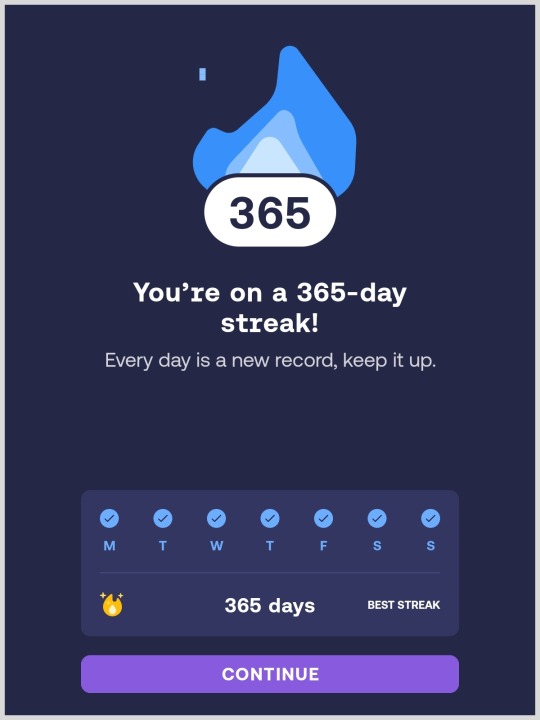
Even though there were sometimes tough times and I often repeated certain course sections, e.g. with "JavaScript", and the progress wasn't immediately apparent, I still enjoyed learning with MIMO again and again.

The support is also good, if you have questions or just get stuck. I can recommend MIMO to anyone who wants to immerse themselves in the world of programming languages online or with the app.
Post #209: Whoopee! My 365 Day streak on Mimo happens today on March 3, 2024.
#coding#programming#coding for kids#programmieren#education#javascript#css#sql#mimo#programming languages#html#teaching#learning#development#developer#developer community
6 notes
·
View notes
Text
How to Install Python on Windows 10
Python is a popular and versatile programming language that you can use for various purposes, such as web development, data analysis, machine learning, and more. In this tutorial, I will show you how to install Python on your Windows 10 computer in a few simple steps.
Step 1: Download the Python installer
You can download the latest version of Python from the official website: https://www.python.org/downloads/. Choose the Windows installer that matches your system architecture (32-bit or 64-bit).
Step 2: Run the Python installer
Once you have downloaded the Python installer, double-click on it to launch it. You will see a window like this:
Make sure to check the box that says “Add Python 3.x to PATH” to enable Python to run from any directory on your computer. Then, click on “Install Now” to start the installation process.
Step 3: Verify the Python installation
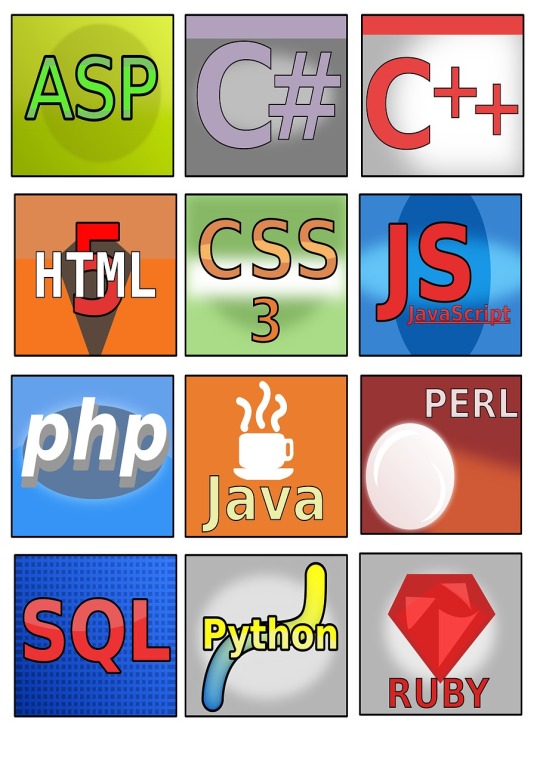
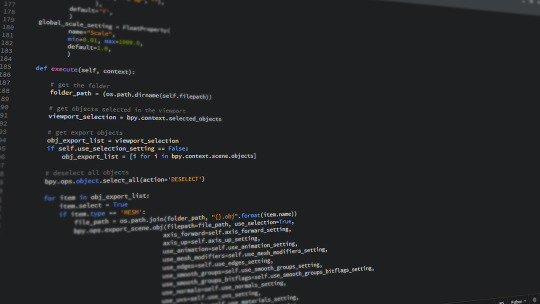
After the installation is complete, you can verify that Python is installed correctly by opening a command prompt and typing:
python --version
You should see the Python version that you installed, like this:
![Python version output]
Congratulations, you have successfully installed Python on your Windows 10 computer! 🎉
Don't forget to follow me @treasuremani
#pythonlearning#python language#software development#software#coding#programming#android app development#html#python#sql#php#css
2 notes
·
View notes
Text
Hmmm. There are two things in this post that are NOT like one another.
Education. The issue of people who don't know what files, folders, and basic IT skills are, and then, by extension, the issue of skill loss as older workers retire. This is a real issue, and speaking as one of those older IT workers, simply keeping up with the pace of advancing tech is hard too. Because everything is designed to be easier to use by people without training (a good thing) it has got harder to get under the hood and tweak things. Nothing is built for that. It all says 'developer friendly' but as systems develop, they become more and more complex and that means specialisation, which means tech workers with very precisely shaped beaks who can't easily generalise across different platforms or even come back to the same tree 3 years later and hope to recognise the bugs.
Control of personal information. These posts are all assuming that because 15 years ago they didn't have to click a pile of permission options, that their personal info wasn't being collected 15-20 years ago. Hahaha. No. What you are seeing there is the result of the EU GDPR legislation, which said, essentially 'if you want to gather data you must get explicit permission to do that'. This has set the precedent for data capture standards. So now, everything has a checkbox. Sometimes it's a checkbox for intrusive adware bordering on a security hole. Sometimes it's a checkbox for 'we couldn't figure out a way to make this work without some information from you'. You get to work out which it is! Yes, it makes the user experience more stressful and difficult. But it does at least give the user the chance to opt out, which back in 2000 wasn't given as an option.
Me: oh yeah, if you think school photography is hard now, try imagining doing this with film.
The new girl: what’s film?
Me: … film. Like… film that goes in a film camera.
New girl: what’s that mean?
Me: … before cameras were digital.
New girl: how did you do it before digital?
Me:… with film? I haven’t had enough coffee for this conversation
#seriously : data collection is not a new thing#Asking permission is the new thing#Also HTML and CSS are markup (formatting) languages#Python is a programming language it's really weird to see them lumped together like this
114K notes
·
View notes
Text

computer courses
0 notes
Text

4 Key Concepts Every Computer Science Student Should Master Early
Building a strong foundation in computer science starts with mastering the right concepts. This infographic highlights 4 fundamental topics that every computer science student should understand early in their learning journey. These concepts not only support academic success but also prepare learners for real-world applications in software development, data structures, algorithms, and system design.
Whether you're pursuing a career in programming, IT, or software engineering, grasping these core ideas is crucial to long-term success in the tech industry. Ideal for beginners, this visual guide simplifies complex topics into easily digestible insights.
Stay ahead by reinforcing your basics and unlocking better learning outcomes in computer science.
📚 Learn Computer science: Attitude Academy
📍 Visit Us: Yamuna Vihar | Uttam Nagar
📞 Call: +91 9654382235
🌐 Website: www.attitudetallyacademy.com
📩 Email: [email protected]
#computer science#computer technology#java programming language#html training#css tips#pythonprogramming#skills development
0 notes
Text
My 365-Days-Streak On SoloLearn ...
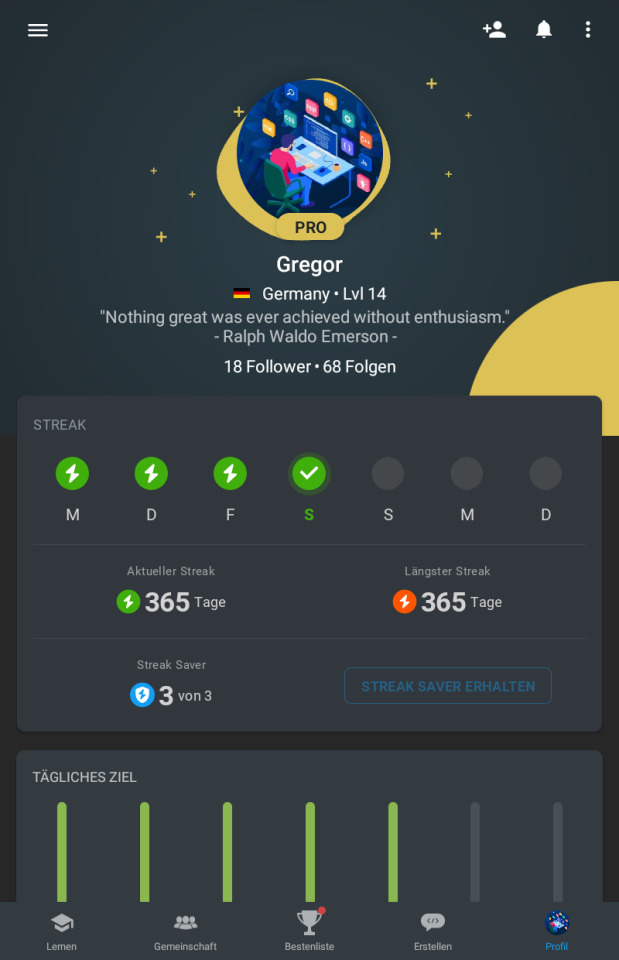
I have been learning programming with SoloLearn every day for 1 year or 365 days now: Python, C#, HTML, CSS and JavaScript. For me, SoloLearn is one of the best providers for learning coding on the go using a tablet or smartphone.
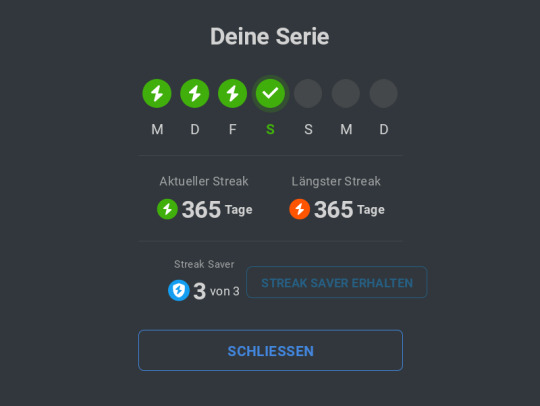
Post #117: SoloLearn, My 365 Days Streak, 2024.
#coding#programming#learning#education#i love programming#coding is fun#i love coding#programming language#i love python#html#css#javascript#sololearn
9 notes
·
View notes
Text
Web Development Course in Gwalior is Your Gateway to a Successful Career
Cupule Trainings, as a best IT training institute in Gwalior, offers job consultancy service, certification and training in Angular Js, Android, Java, PHP, HTML5 Bootstrap, digital marketing, SEO, Social media marekting, Wordpress, Shopify, HTML CSS, CSS3, IOS, Web design and development, programming languages, database management system and all other certification courses from highly experienced industry experts.
#Cupule Trainings#as a best IT training institute in Gwalior#offers job consultancy service#certification and training in Angular Js#Android#Java#PHP#HTML5 Bootstrap#digital marketing#SEO#Social media marekting#Wordpress#Shopify#HTML CSS#CSS3#IOS#Web design and development#programming languages#database management system and all other certification courses from highly experienced industry experts.
0 notes
Text
In the wake of the TikTok ban and revival as a mouthpiece for fascist propaganda, as well as the downfall of Twitter and Facebook/Facebook-owned platforms to the same evils, I think now is a better time than ever to say LEARN HTML!!! FREE YOURSELVES FROM THE SHACKLES OF MAJOR SOCIAL MEDIA PLATFORMS AND EMBRACE THE INDIE WEB!!!
You can host a website on Neocities for free as long as it's under 1GB (which is a LOT more than it sounds like let me tell you) but if that's not enough you can get 50GB of space (and a variety of other perks) for only $5 a month.
And if you can't/don't want to pay for the extra space, sites like File Garden and Catbox let you host files for free that you can easily link into NeoCities pages (I do this to host videos on mine!) (It also lets you share files NeoCities wouldn't let you upload for free anyways, this is how I upload the .zip files for my 3DS themes on my site.)
Don't know how to write HTML/CSS? No problem. W3schools is an invaluable resource with free lessons on HTML, CSS, JavaScript, PHP, and a whole slew of other programming languages, both for web development and otherwise.
Want a more traditional social media experience? SpaceHey is a platform that mimics the experience of 2000s MySpace
Struggling to find independent web pages that cater to your interests via major search engines? I've got you covered. Marginalia and Wiby are search engines that specifically prioritize non-commercial content. Marginalia also has filters that let you search for more specific categories of website, like wikis, blogs, academia, forums, and vintage sites.
Maybe you wanna log off the modern internet landscape altogether and step back into the pre-social media web altogether, well, Protoweb lets you do just that. It's a proxy service for older browsers (or really just any browser that supports HTTP, but that's mostly old browsers now anyways) that lets you visit restored snapshots of vintage websites.
Protoweb has a lot of Geocities content archived, but if you're interested in that you can find even more old Geocities sites over on the Geocities Gallery
And really this is just general tip-of-the-iceberg stuff. If you dig a little deeper you can find loads more interesting stuff out there. The internet doesn't have to be a miserable place full of nothing but doomposting and targeted ads. The first step to making it less miserable is for YOU, yes YOU, to quit spending all your time on it looking at the handful of miserable websites big tech wants you to spend all your time on.
#this is a side point so it's going here but I really think tech literacy should be a requirement in schools like math grammar history etc.#we live in a world so dominated by the stuff and yet a majority of the population does not understand it at even the most fundamental level#tiktok#tiktok ban#indie web#neocities#web development#current events#twitter#facebook#meta#amazon
11K notes
·
View notes
Text

How To Create A Statistic Counter For Your Website Using HTML, CSS & JavaScript — Sohojware
Do you ever wonder how many visitors your website attracts? Or perhaps you’re curious about how many times a specific button is clicked? Website statistics counters provide valuable insights into user behavior, and statistic counters are a fantastic way to visualize this data. In this comprehensive guide by Sohojware, we’ll delve into creating a basic statistic counter using HTML, CSS, and JavaScript.
This guide is tailored for users in the United States who want to enhance their website with an engaging statistic counter. Whether you’re a seasoned developer or just starting out, this tutorial will equip you with the necessary steps to implement a statistic counter on your website.
Why Use a Statistic Counter?
Website statistic counters offer a multitude of benefits. Here’s a glimpse into why they’re so valuable:
Track Visitor Engagement: Statistic counters provide real-time data on how many visitors your website receives. This information is crucial for understanding your website’s traffic patterns and gauging its overall effectiveness.
Monitor User Interaction: By placing statistic counters strategically on your website (e.g., near buttons or downloads), you can track how often specific elements are interacted with. This allows you to identify areas that resonate with your audience and areas for improvement.
Boost User Confidence: Well-designed statistic counters can showcase the popularity of your website, fostering trust and credibility among visitors. Imagine a counter displaying a high number of visitors — it subconsciously assures users that they’ve landed on a valuable resource.
Motivate Action: Strategic placement of statistic counters can encourage visitors to take desired actions. For instance, a counter displaying the number of downloads for a particular resource can entice others to download it as well.
Setting Up the Project
Before we dive into the code, let’s gather the necessary tools:
Text Editor: Any basic text editor like Notepad (Windows) or TextEdit (Mac) will suffice. For a more feature-rich experience, consider code editors like Visual Studio Code or Sublime Text.
Web Browser: You’ll need a web browser (e.g., Chrome, Firefox, Safari) to view the final result.
Once you have these tools ready, let’s create the files for our project:
Create a folder named “statistic-counter”.
Within the folder, create three files:
Building the HTML Structure

Let’s break down the code:
DOCTYPE declaration: Specifies the document type as HTML.
HTML tags: The and tags define the root element of the HTML document.
Lang attribute: Specifies the document language as English (en).
Meta tags: These tags provide metadata about the webpage, including character encoding (charset=UTF-8) and viewport configuration (viewport) for optimal display on various devices.
Title: Sets the title of the webpage displayed on the browser tab as “Website Statistic Counter — Sohojware”.
Link tag: Links the external CSS stylesheet (style.css) to the HTML document.
Body: The tag contains the content displayed on the webpage.
Heading: The tag creates a heading element with the text “Website Statistic Counter”.
Counter container: The element with the ID “counter-container” serves as a container for the counter itself.
Counter span: The element with the ID “counter” displays the numerical value of the statistic counter. The initial value is set to 0.
Script tag: The tag references the external JavaScript file (script.js), which will contain the logic for updating the counter
Styling the Counter
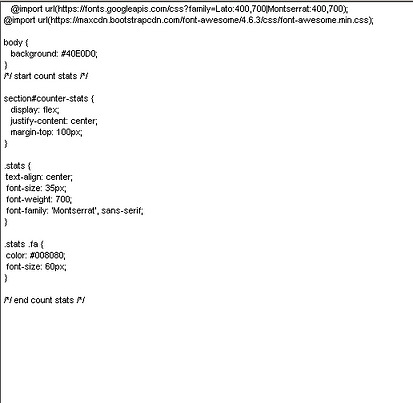
Let’s break down the CSS styles:
Body: Sets the font family for the entire body and centers the content.
Heading: Adds a bottom margin to the heading for better spacing.
Counter container: Styles the container with a border, padding, width, and centers it horizontally.
Counter: Sets the font size and font weight for the counter element, making it prominent.
Implementing the JavaScript Logic

Let’s break down the JavaScript code:
Variable declaration: Declares variables counter and count. counter references the HTML element with the ID “counter”, and count stores the current counter value.
updateCounter function: Defines a function named updateCounter that increments the count variable and updates the text content of the counter element.
setInterval: Calls the updateCounter function every 1000 milliseconds (1 second), creating a continuous update effect.
Running the Counter
Save all the files and open the index.html file in your web browser. You should see a webpage with the heading “Website Statistic Counter” and a counter that increments every second.
Customization and Enhancements
This is a basic example of a statistic counter. You can customize it further by:
Changing the counter speed: Modify the setInterval interval to adjust how frequently the counter updates.
Adding a start/stop button: Implement a button to start and stop the counter.
Displaying different units:��Instead of a raw number, display the counter in units like “views” or “downloads”.
Integrating with analytics tools: Connect the counter to analytics tools like Google Analytics to track more detailed statistics.
Styling the counter: Experiment with different CSS styles to customize the appearance of the counter.
FAQs
1. Can I use a statistic counter to track specific events on my website?
Yes, you can. By placing statistic counters near buttons or links, you can track how often those elements are clicked or interacted with.
2. How often should I update the counter?
The update frequency depends on your specific use case. For a real-time counter, updating every second might be suitable. For less frequent updates, you can increase the interval.
3. Can I customize the appearance of the counter?
Absolutely! You can modify the CSS styles to change the font, color, size, and overall appearance of the counter.
4. Is it possible to integrate a statistic counter with other website elements?
Yes, you can integrate statistic counters with other elements using JavaScript. For example, you could display the counter value within a specific section or trigger other actions based on the counter’s value.
5. How can I ensure the accuracy of the statistic counter?
While JavaScript can provide a reliable way to track statistics, it’s essential to consider potential limitations. Factors like browser caching, ad blockers, and user scripts can influence the accuracy of the counter. If you require highly accurate statistics, it’s recommended to use server-side tracking mechanisms or analytics tools.
By following these steps and exploring the customization options, you can create a dynamic and informative statistic counter that enhances your website’s user experience and provides valuable insights into your audience’s behavior.
#sohojware#web development#web design#appsdevelopment#software development#css#html#java script#programming languages
1 note
·
View note